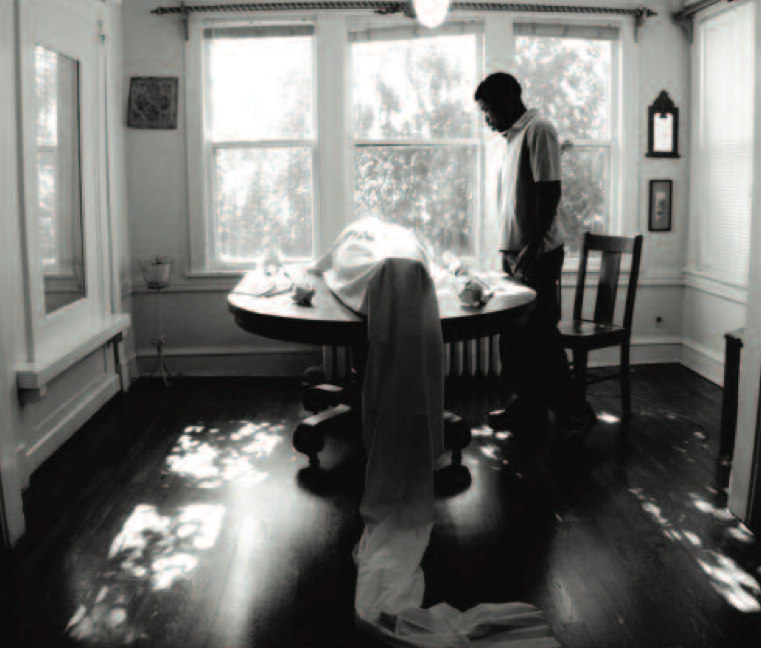Sherwood Anderson‘s Winesburg, Ohio, is sometimes named as a great work of fiction that cannot be filmed. Daniel Nearing demonstrates in “Chicago Heights” that’s not necessarily true. The book is a collection of 22 short stories connected by the character George Willard, who comes of age there and reflects on the citizens he has grown to know. Perhaps one could make 22 short films. Nearing finds an approach that in 90 minutes accomplishes the uncanny feat of distilling the book’s essence.
Anderson’s Winesburg is a town with roads that can be walked along a short distance into the country. His time frame spans the century’s quarter-century. Nearing’s Chicago Heights is a distant Southern suburb of Chicago, bordering on farmland. His time is the present and recent decades. His central character is Nathan Walker Andre Truss), also played as Old Nathan by William Gray, and at that age named in the credits as Sherwood Anderson. Anderson’s characters were all white. Nearing’s characters are all African-American. Race is not really a factor. We are concerned with inner selves.
It’s helpful, maybe essential, to be familiar with the book before seeing the movie. Anderson explains his theory of Grotesques, by which he means not sideshow freaks but people who have one aspect of their body or personality exaggerated out of proportion to the whole. Wing Biddlebaum, for example, has hands so expressive they flutter like birds, and these beautiful hands are the cause of his isolation and hatred by the community. All of the characters have some special reason they don’t fit in. This attribute is why their inner thoughts and dreams never become known. They are judged by the uncaring, and will be buried never understood.
What Nearing does, and it is rather brilliant, is show us Nathan in old age, under a blanket on his bed, remembering, dreaming or hallucinating about the people he has known. A narrator explains his thoughts. Remarkably for a film of average length, Nearing touches on almost every one of Anderson’s characters, and because of his meditative stylistic approach the film never feels rushed or choppy.
The film is mostly in contrasty black and white, sometimes slipping into color. Dialogue slips in and out too, as it does in the book, but we’re not intended to think it’s being said now. It’s being heard in memory. Chicago Heights is seen as a not particularly lovely place drowsing near the prairie with the skyline of modern Chicago in the distance. Much of it was shot on location, and Nearing succeeds in establishing it as a place like Winesburg where the countryside is always in walking distance, and one can go there with one’s grotesqueries and feel at peace.
When I say it helps to have read the book, I don’t mean to frighten you. Perhaps you could read just a few of the stories to begin with. They won’t take long, and once you understand their workings the whole film will come into focus. Nearing is not the first artist to be drawn to Winesburg. It inspired a made-for-TV film and a Broadway musical, and influenced such as Hemingway, Faulkner, Steinbeck and Salinger. It is a beautiful book, and has inspired this beautiful film.




















